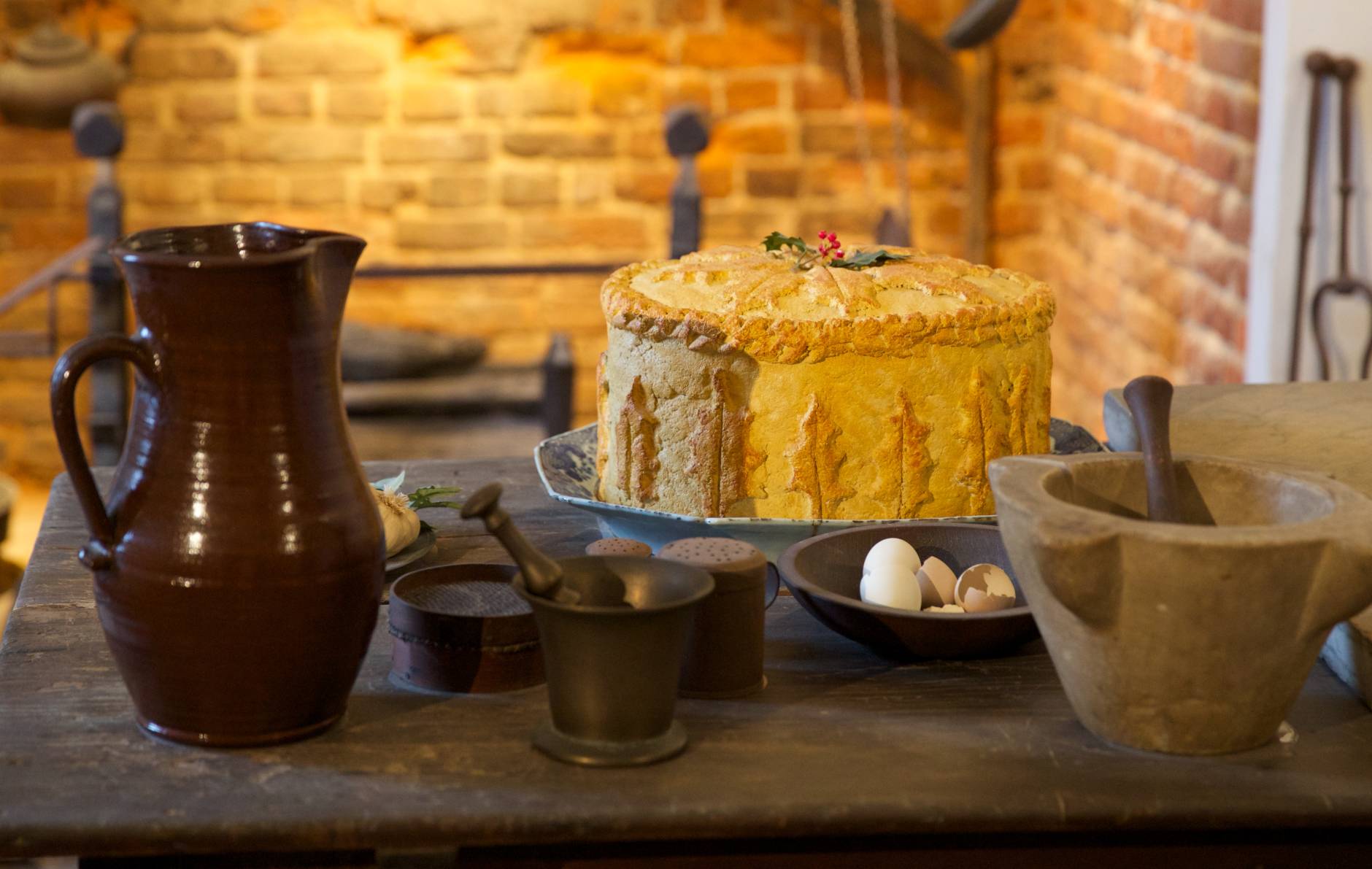
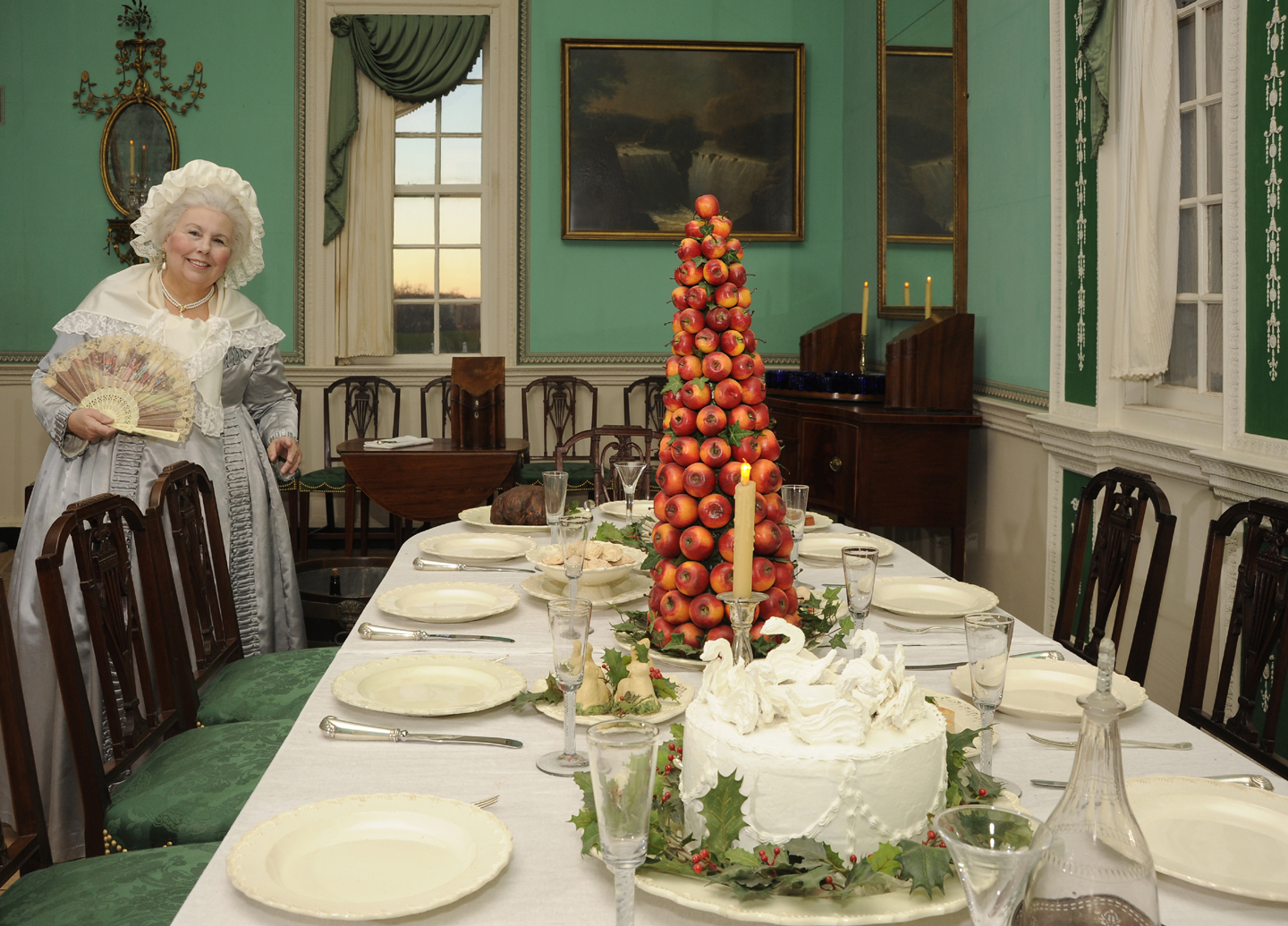
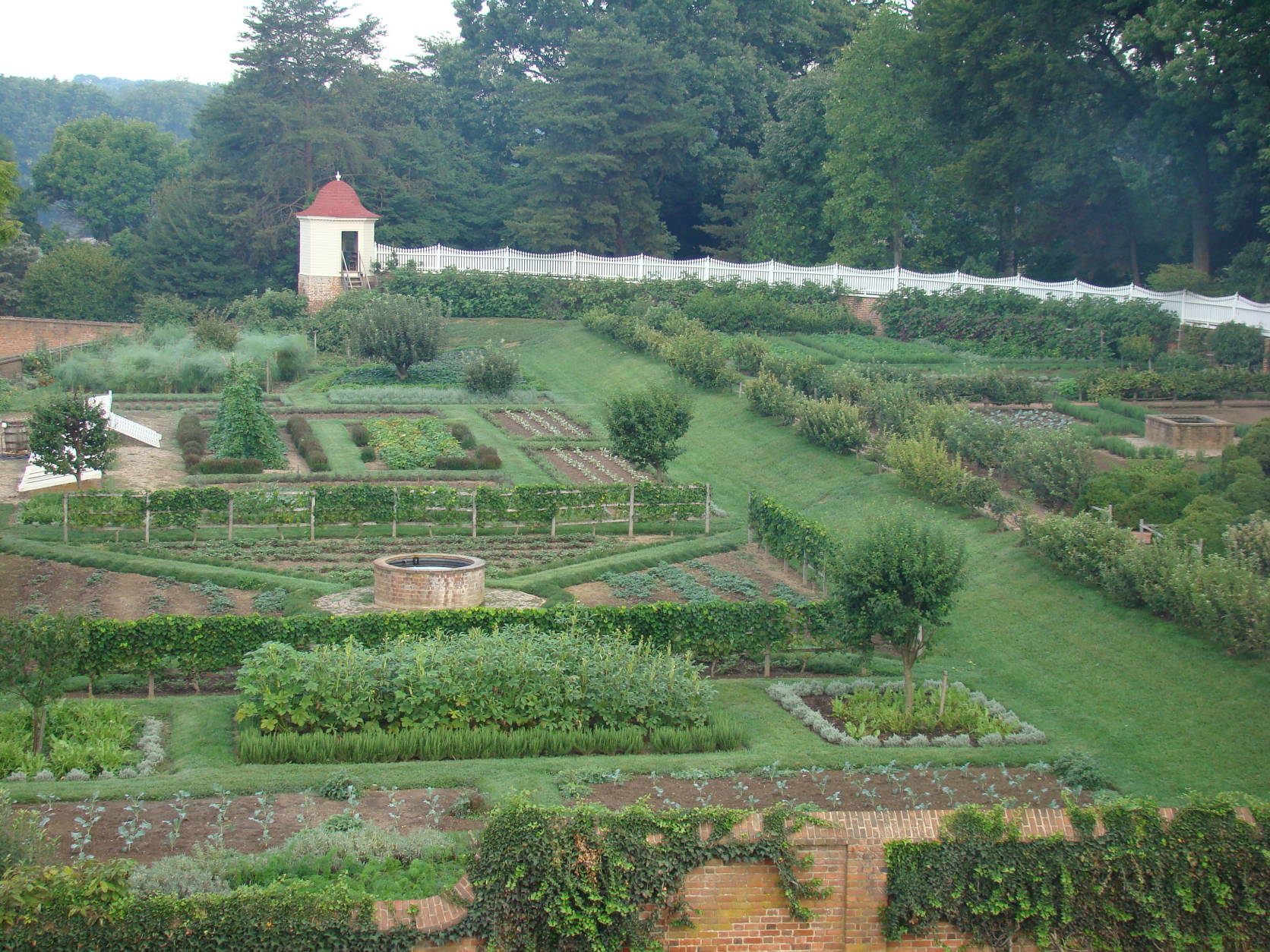
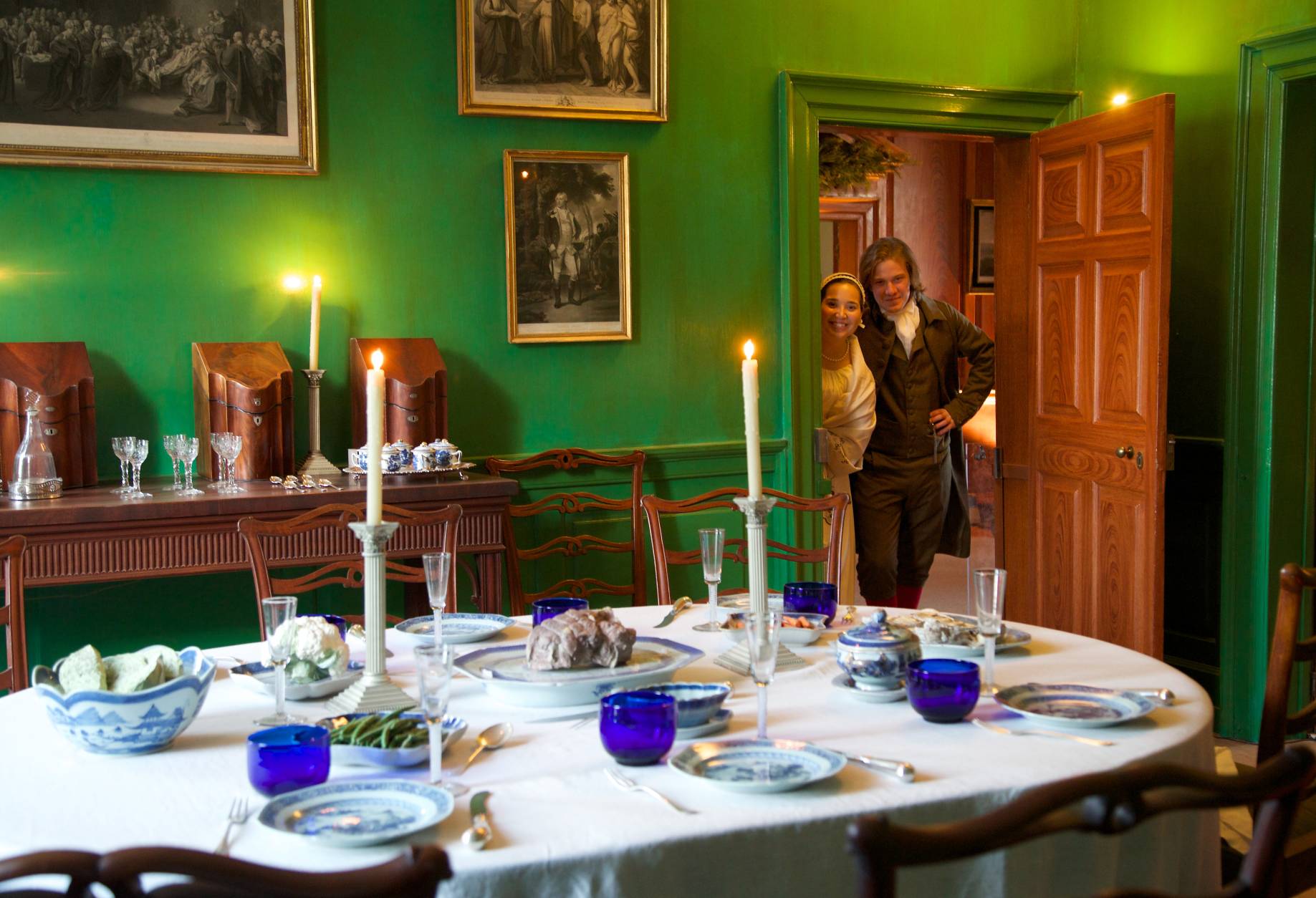
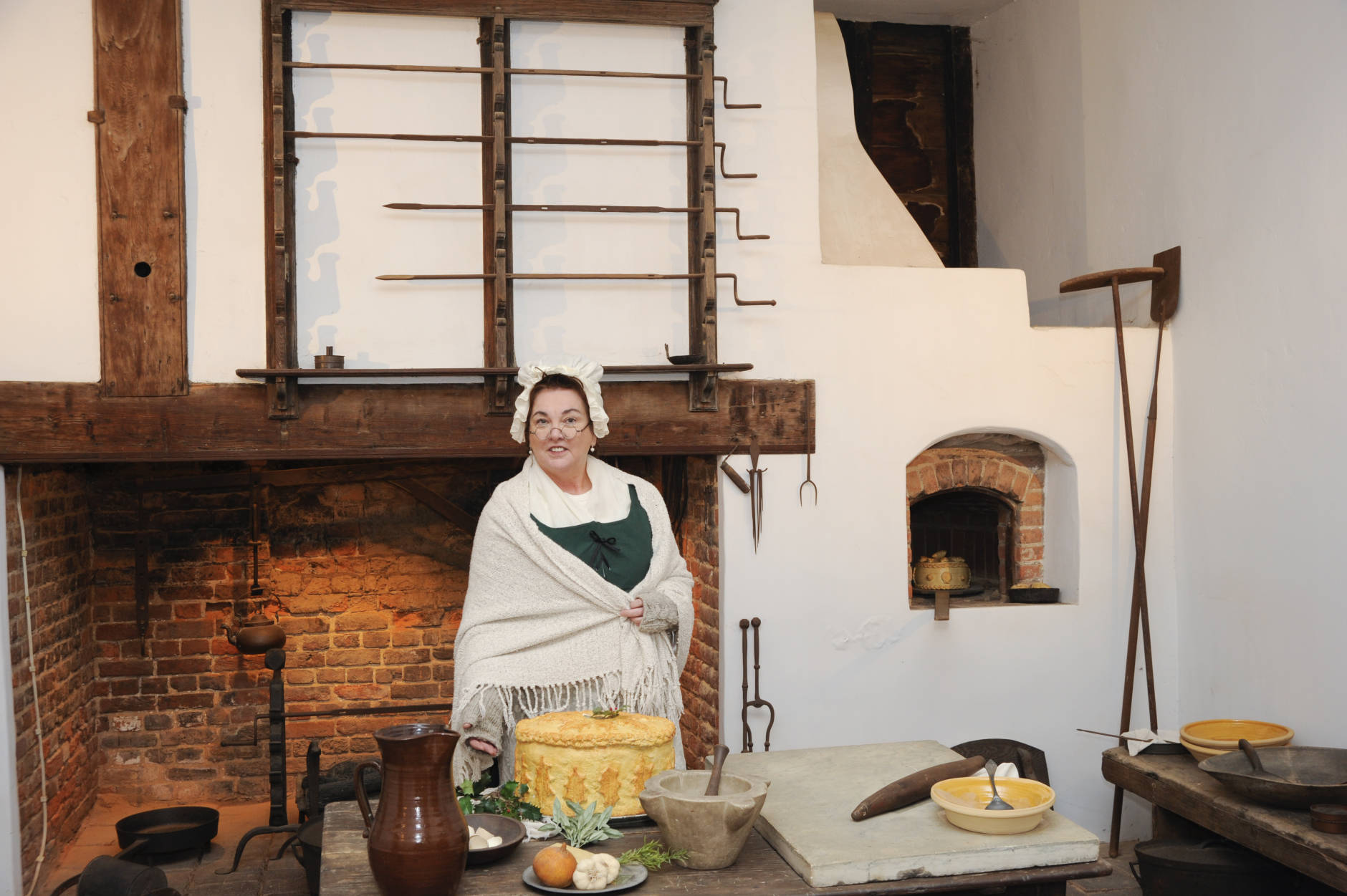
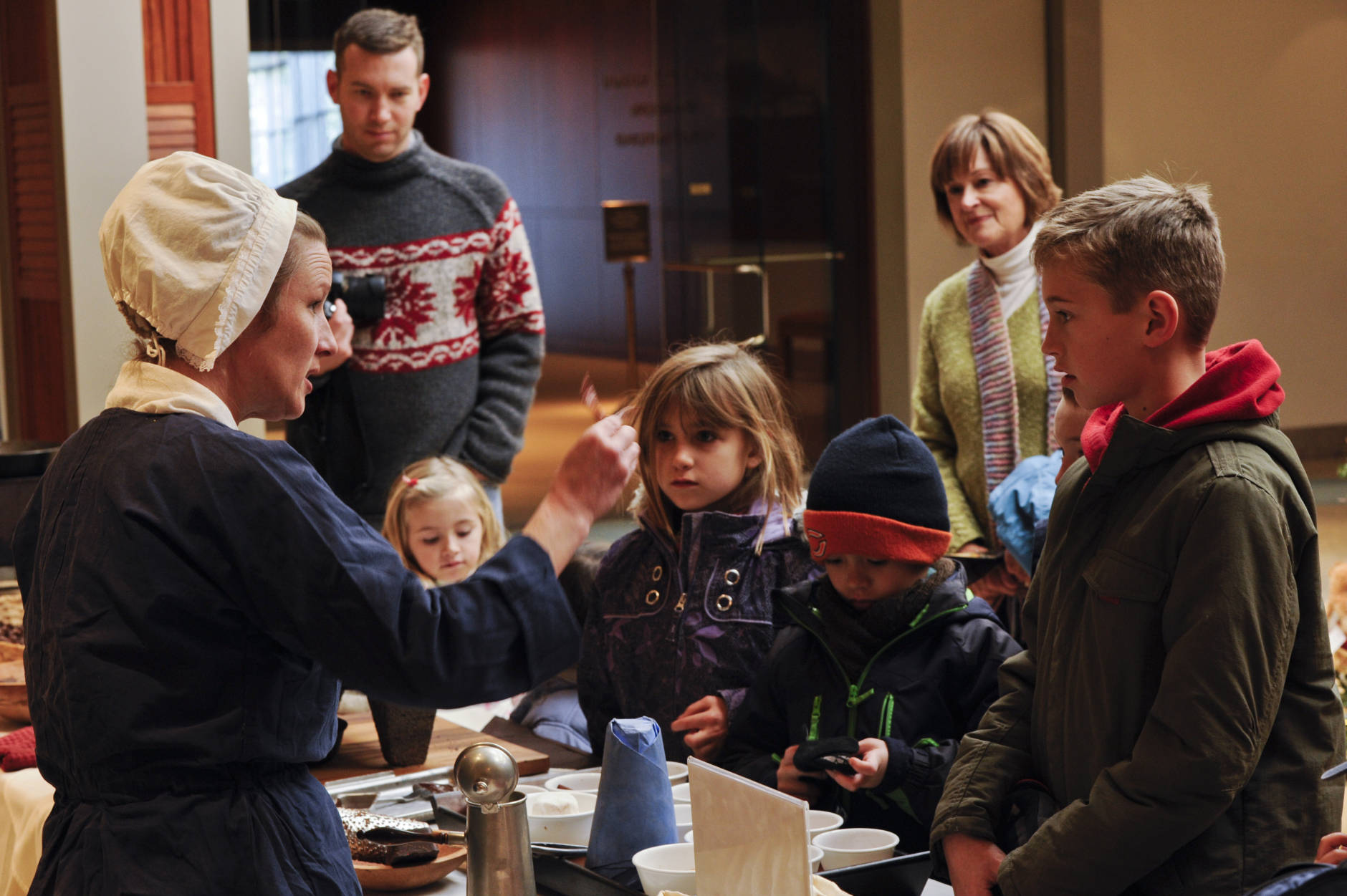
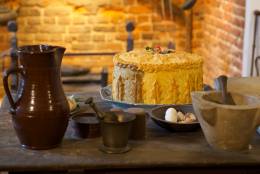
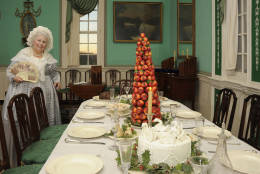
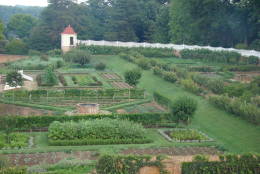
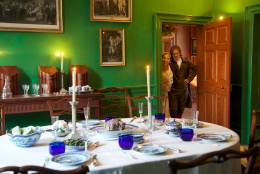
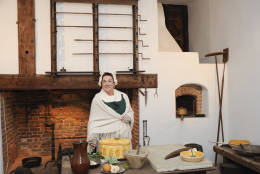
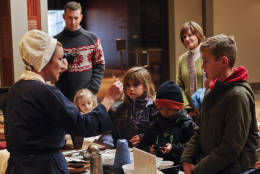
WASHINGTON — If you’re hosting a holiday get-together this year, put away the tricked-out blenders, fancy sous vide machines and overly complicated cocktail gadgets.
When it comes to Christmas cuisine, nothing beats a traditional spread — and a local landmark is celebrating one that dates back to the 18th century.
At George Washington’s Mount Vernon in Alexandria, Virginia, the mansion’s dining room table is set for a holiday feast. Gail Cassidy, an interpreter at the first president’s estate, walked WTOP through some of the Washingtons’ favorite Christmas foods and how they got to the table.
Quick Facts: Dining at George Washington’s Mount Vernon
- Forget the now-chic 8 p.m. dinner reservation. Dinner at Mount Vernon was a midday meal, typically served around 2 p.m.
- Much of the food served while George and Martha Washington lived on the estate came from the gardens, where the Washingtons grew everything from lettuces to pitted fruits, beans, carrots, herbs and more. Anything that wasn’t consumed during its growing season was preserved, typically by layering the vegetable with salt in crocks that were sealed with animal skin. Fruits were put up in syrups.
- Most of the meat at Mount Vernon was preserved during the winter months. The labor-intensive process began with dehydrating the meat and then smoking it in the estate’s smoke house. When it was time to eat, the protein had to be rehydrated, by way of a several-day soak in water.
- When the dinner bell rang at Mount Vernon, guests were instructed to convene in the parlor before heading into the dining room. Typically, all of the food was set on the table an hour before eating (everything except the soup was consumed at room temperature), and plates were passed, family style.
The main course at Christmas:
The Christmas pie was classic at George Washington’s Mount Vernon — however, it was anything but simple.
The meat pie, which often took several days to prepare, was cooked in a “coffin crust,” made from flour and water. This crust was not intended to be consumed, Cassidy explained. It was the vessel in which the pie was cooked and transported.
The cooks at Mount Vernon filled the crust with a turkey that was stuffed with a goose, that was stuffed with a chicken, that was stuffed with a duck.
“And finally some small bird like a pigeon — deboning all those birds beforehand,” Cassidy added.
The meat was placed in the coffin crust, along with 5 pounds of butter. Then, it was baked in the oven for a few hours.
“You could actually take those and ship them by boat over to England, or from England to this country, because they are preserved in all that fat. They lasted at least six months, sometimes a year,” Cassidy said.
When it’s time for dinner, the crust was cracked and the layered meat was sliced.
“I have eaten it and it is extraordinarily good,” Cassidy said about the Christmas pie.
A foot-tall cake and a full dessert table
Dessert was no joke during the holiday season at George Washington’s Mount Vernon. Mrs. Washington’s customary “Great Cake” called for 24 eggs, along with sugar, brandy and candied fruit.
“The reason you use so many [eggs] is because you beat it; it beats air into it and makes it rise. This is before the leveling agents that we are so familiar with today, like baking soda,” said Cassidy, who added that the final product was close to 1-foot tall.
Instead of a rich frosting, it was topped with a sugar and egg white mixture that helped to preserve the cake. Similar to the Christmas pie, the crust could be cracked off before it was time to eat the cake.
Other sweets on the table may have included a hedgehog cake, which is made using almond paste to achieve the shape of the small spiny mammal, cookies, jellies and plum pudding.
A punch that delivers a serious punch
Another favorite recipe served at Mount Vernon was Martha Washington’s rum punch. Cassidy says the spirit was made using five components — water, lemons, sugar, spices and rum.
“If you make it right, you can’t taste the liquor, which is dangerous, but it’s good,” Cassidy said.
Ready to give an 18th century Christmas party a try? See the recipe below for the Washington’s Christmas pie.
Recipe: Yorkshire Christmas Pie
Courtesy George Washington’s Mount Vernon
Many of George and Martha Washington’s favorite recipes have been collected, tested and, to some degree, updated. They’re available on Mount Vernon’s website and in the book “Dining With the Washingtons.” Food-specific tours are also available at the estate; visit the website for more information.
Ingredients
Pastry:
- 3 cups all-purpose flour
- 3 teaspoons salt
- 2/3 cup lard or vegetable shortening
- 1/4 cup whole milk
Filling:
- 1 whole turkey breast (about 4 pounds), skin on and boned
- 1 whole chicken (about 3 pounds), skin on and boned, or 4 chicken breasts (about 6 ounces each), skin on and boned
- Salt
- Ground black pepper
- 2 to 4 tablespoons vegetable oil
- 2 large carrots, peeled and diced
- 1 medium onion, peeled and diced
- 3 ribs celery, diced
- 1/2 teaspoon ground cloves
- 1/4 cup dry white wine
Assembly:
- 2 tablespoons chopped fresh parsley
- 2 tablespoons chopped fresh winter savory
- 2 tablespoons chopped fresh thyme
- About 1 pound thinly sliced bacon
- 1 large egg, lightly beaten
Gravy:
- 1 tablespoon unsalted butter
- 1 tablespoon all-purpose flour
- 2 cups chicken stock
- 2 sprigs fresh parsley
- 2 sprigs fresh thyme
- 4 leaves fresh sage
Instructions
To make the pastry, sift the flour and salt into a large mixing bowl.
Melt the lard in the milk, bring to a boil and pour into the flour. With a wooden spoon, mix together quickly to form a dough; it will be quite firm, somewhat like Play-Doh. Turn the dough out onto a lightly floured work surface and knead until smooth. Cover loosely with plastic wrap and let it rest on the work surface at room temperature for 20 minutes.
To make the filling, season the turkey and chicken all over with salt and pepper. In a large saute pan over medium-high heat, heat 2 tablespoons of the vegetable oil. Put the turkey breast in the pan, skin-side down, and cook until browned. Remove from the pan and set aside. Put the chicken in the hot pan, skin-side down, and cook until browned. Remove from the pan and set aside along with the turkey.
Reduce the heat and add about 2 more tablespoons of the vegetable oil to the pan, if necessary. Add the carrots, onion and celery, and cook for about five minutes until softened, stirring frequently to keep from browning. Season with salt and pepper, and stir in the cloves. Add the wine, stirring to deglaze (to loosen the browned bits on the bottom of the pan), and simmer for about five minutes until reduced by half. Transfer the vegetables to a bowl and set aside to cool.
Preheat the oven to 400°F. Grease a 9-inch springform pan with vegetable shortening.
On a lightly floured work surface, roll two-thirds of the pastry into a circle about 1/4 inch thick. Line the greased pan with the pastry, allowing it to hang about 1/2 inch over the sides.
To assemble the pie, sprinkle the bottom and sides of the pastry with about one-third of the parsley, winter savory and thyme. Line the bottom and sides of the pastry with about one-third of the bacon. Spread one-third of the vegetable mixture on top of the bacon.
Lay the turkey breast, skin-side up, atop the vegetables. It may be necessary to trim the turkey to fit, using the trimmings to fill in any gaps. Cover the turkey with another one-third of the vegetable mixture, sprinkle on another one-third of the herbs and cover with a thin, even layer of about another one-third of the bacon.
Arrange the chicken, skin-side up, on top of the bacon, again trimming to fit if necessary. Cover the chicken with the final one-third of the vegetables, herbs and a thin, even layer of bacon.
Roll out the final one-third of the dough on a lightly floured work surface to form a circle about 9 inches in diameter. Brush the 1/2-inch overhang with beaten egg, drape the pastry circle over the top of the filled pan and fold the 1/2-inch overhang over the edges of the pastry circle to seal together. Cut out any dough scraps to create decorative toppings, such as leaves, stars or trees. Brush the top lightly with the beaten egg.
Set the pie on a baking sheet and bake for 30 minutes. Cover loosely with aluminum foil and continue baking for about another hour. Then check the temperature every 10 minutes or so (piercing an instant-read thermometer through the crust and into the pie) until the internal temperature reaches 155°F. Remove from the oven and set the pie on a wire rack to allow the temperature to rise to 165°F. Cool for one hour before carefully releasing it from the pan.
While the pie cools, make the gravy. Melt the butter in a small saucepan over medium heat. Whisk in the flour until incorporated to make a blond (light-colored) roux (thickening paste). Slowly whisk in the chicken stock and simmer for two to three minutes until thickened. Remove from the heat, add the parsley, thyme and sage, and allow the herbs to steep for 15 minutes. The gravy can also be prepared ahead of time and reheated just before serving.
To serve, set the cooled pie on a platter. At the table, cut a small hole in the top of the crust and carefully pour in the hot gravy. Slice into wedges.







